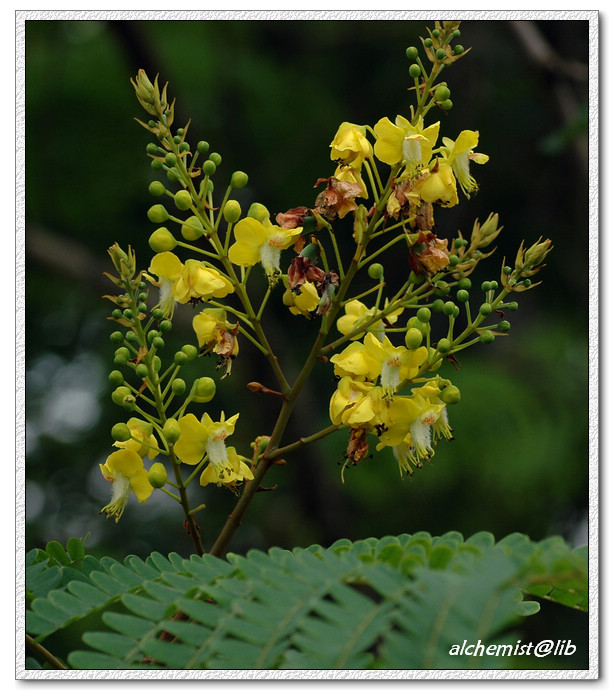苏木 Biancaea sappan

- Scientific Name: Biancaea sappan (L.) Tod.
- Ref: Hort. Bot. Panorm. 1:3. 1875
- Synonym: Caesalpinia angustifolia Salisb.; Caesalpinia sapang Noronha; Caesalpinia sappan L.
- English Common Name: sappanwood, Indian redwood
- Chinese Common Name: 苏木 sūmù, 苏枋/苏方 sūfāng, 苏方木 sūfāng∙mù
- Japanese Common Name: スオウ [蘇芳/蘇方/蘇枋] suō
- Family: Fabaceae
- Genus: Biancaea
- Distribution: Cultivated in Fujian, Guangdong, Guangxi, Guizhou, Hainan, Sichuan, Taiwan, Yunnan [native origin unknown; Cambodia, India, Laos, Malaysia, Myanmar, Sri Lanka, Vietnam; Africa, America].
- Photo: 06/21/2009, South China Botanical Garden, Guangdong
Trees, small, to 6 m tall, ± puberulent except on old branches and legumes. Branches with dense, conspicuous lenticels. Leaves 30-45 cm; pinnae 7-13 pairs, opposite, 8-12 cm; leaflets 10-17 pairs, closely spaced, sessile, oblong to oblong-rhombic, 1-2 cm × 5-7 mm, papery, both surfaces glabrous or sparsely hairy, lateral veins slender, conspicuous on both surfaces, contiguous near margin, base oblique, inserted at oblique angles to rachis of pinnae, apex retuse or rounded. Panicles terminal or axillary, ca. as long as leaves; bracts caducous, lanceolate, large. Pedicels ca. 1.5 cm, puberulent. Receptacle shallowly campanulate. Sepals 5, slightly unequal, lower one larger than others, cucullate. Petals yellow, broadly obovate, ca. 9 mm, uppermost one entire at apex, tinged pink at base, clawed. Stamens slightly exserted; filaments densely pubescent at lower part. Ovary grayish velutinous, stalked, 3-6-ovuled; style slender, hairy; stigma truncate. Legume reddish brown, shiny, slightly compressed, suboblong to oblong-obovoid, ca. 7 × 3.5-4 cm, woody, attenuate to base, apex obliquely truncate, upper margin with a sharp beak. Seeds 3 or 4, light brown, slightly compressed, oblong. Fl. May-Oct, fr. Jul-Mar. 2n = 24. (Flora of China)